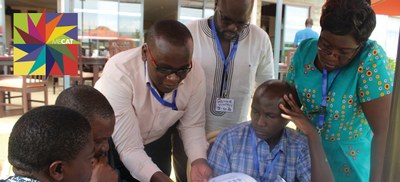A Tool to Rely On
A new, innovative toolkit helps assess and build M&E capacity in the public sector.
 A plethora of tools have been developed to assess the monitoring and evaluation (M&E) capacity of public institutions and international development organizations. Most of these tools, however, fall short of presenting a framework for understanding an organization’s capacity to develop systems to monitor and evaluate programs. Even where such tools exist, they differ in the components they assess, or fail to present a holistic approach to understanding M&E capacity.
A plethora of tools have been developed to assess the monitoring and evaluation (M&E) capacity of public institutions and international development organizations. Most of these tools, however, fall short of presenting a framework for understanding an organization’s capacity to develop systems to monitor and evaluate programs. Even where such tools exist, they differ in the components they assess, or fail to present a holistic approach to understanding M&E capacity.
The MECAT Toolkit
In 2012, the United States Agency for International Development (USAID) funded MEASURE Evaluation PIMA (MEval-PIMA) to support Kenya’s Ministry of Health in strengthening its national and subnational M&E capacity and making better use of health data in its decisions.
MEval-PIMA developed the Monitoring and Evaluation Capacity Assessment Toolkit (MECAT)—a group of tools that can identify gaps in M&E capacity—to help strengthen the M&E system in Kenya’s public health sector.
“The toolkit is innovative for a number of reasons,” says Dr. Geoffrey Lairumbi, an M&E senior technical specialist for MEval-PIMA who helped develop the MECAT. “It takes a broader look at M&E capacity. It brings all the important capacity areas under a single umbrella at the same time, to observe how they interact with each other. And it goes beyond telling us simply where there’s capacity and where there isn’t. It looks at the condition of the capacity—is it acceptable? Does it reflect something else? How technologically and financially independent is it? That’s the story we want to tell.”
The toolkit was successfully used to carry out baseline assessments in six national programs and in 17 counties between 2013 and 2016. MECAT has been found to facilitate an open, participatory approach to identifying capacity issues, guiding strategy, and measuring program effectiveness. By using the toolkit, MEval-PIMA was able to create a package of interventions to develop specific capacity areas needed for M&E.
MECAT was also used to conduct end line assessments in two health programs and three counties in Kenya, to identify any changes in M&E capacity since the start of the project. The toolkit allows for the collection of data at two time points, enabling countries and subnational units to see their progress over time.
Expanding Use of the MECAT
Ministries in Kenya that were not part of the initial MECAT assessments are now requesting use of it to help build capacity. MECAT has also been used in several countries where the USAID-funded MEASURE Evaluation project is working, including the Democratic Republic of the Congo. The MECAT is being translated and used in multiple other countries through various programs, as well.
Dr. Lairumbi isn’t surprised the MECAT is gaining popularity. “We have a validated solution for measuring capacity and the effectiveness of efforts to build capacity,” he says. “It’s a tool you can rely on.”
For More Information
To learn more about the MEASURE Evaluation PIMA project, MECAT, and baseline and end line assessments in Kenya, visit https://www.measureevaluation.org/pima.












